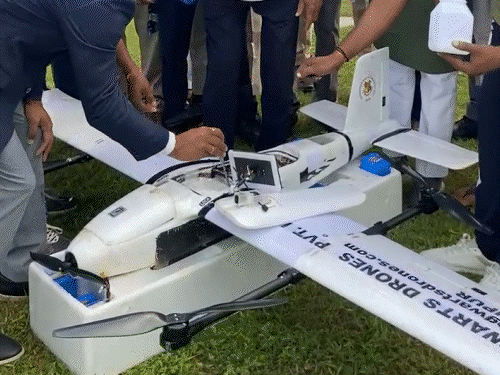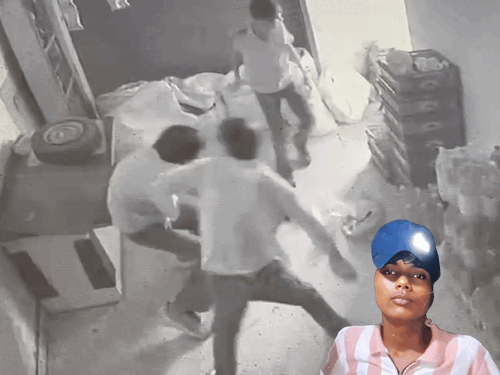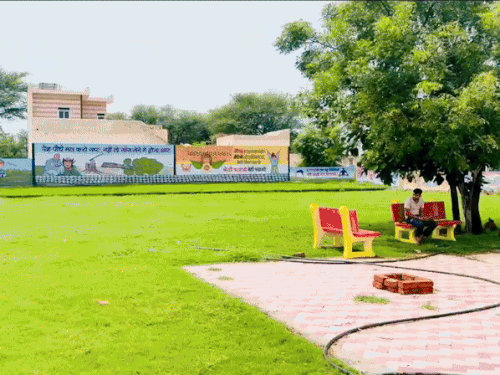Questions are being raised on the use of artificial rain through drones recently at Ramgarh Dam in Jaipur. Cloud seeding was done by blowing a drone 10 times in 4 stages. Still it could not rain. However, the company is claiming that it managed to get 0.8 mm of rain. X
,
Bhaskar knew the answers to questions related to this technique from Laxman Singh Rathore, former Director General of Indian Meteorological Department and permanent representative in the World Meteorological Organization of the United Nations. Also interacted with the representative of the company claiming artificial rain.
Question: Artificial rain efforts are going on in Rajasthan, but could not succeed? answer : Artificial rain is scientifically possible, but it is more important when and where to do it. When used in the area of Ramgarh dam, it was raining in the entire state. It was also raining in Jaipur and Ramgarh. In such a situation, there was no justification for giving artificial rain. This is a task like pushing the moving train.
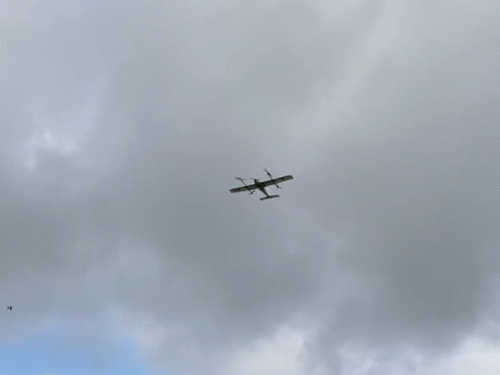
Attempts have been made for rain by blowing a drone 10 times in the Ragamar Dam area.
Question: Drone technology is being used for artificial rain, is it possible for rain in a large area? answer : The use of drones in this experiment is suspicious. Because only a limited amount of hygroscopic material can be released in clouds from the drone. This technique is not sufficient to make such a large rain rain.
Question: A company experimented 4 times, why are they failing? answer : The drone technology that was used is not as effective as cloud seeding through a ship or helicopter. A limited amount of hygroscopic material (rains by clouds) can be released into clouds. This technique is not sufficient to make such a large rain rain.
Along with this, the drone in Jaipur was blown up to a height of 1 km. Given the cloud seeding conditions, there should be a height of at least 2 to 4 kilometers.
Question: According to you, when is the rain possible, when is the right time?
answer : The right time is when there is moisture in the air and water is needed. Suppose there is a drought at some place and if there is a need for water, then artificial rain can be done in a limited area by cloud seeding. But for this, efforts should be made only after seeing the weather and the atmosphere.
I do not think that the use of rain from drone has been successful so far. Because cloud seeding has to leave more height as well as sufficient amount of hygroscopic material. All this can be done by airplane or helicopter.
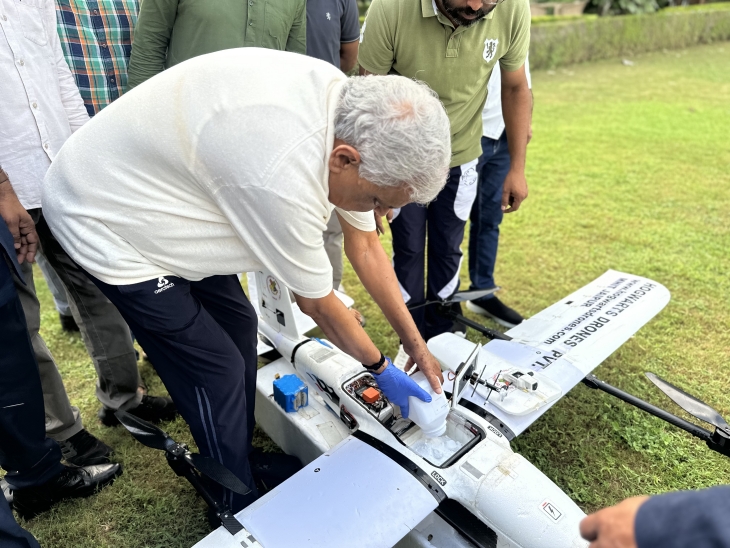
Agriculture Minister Kirori Lal Meena putting 1.5 kg of chemicals required to rain in the box made in the drone.
Question: Is there any figure on the success of artificial rain in India and the world? answer : Till now, no concrete evidence has been revealed from the experiments of artificial rains done in the world, not only that it has rained from cloud seeding.
It is very difficult to decide whether it rained in a natural way or by your use. So far no evidence-based research has proved it completely successful.
Question: What are the benefits and disadvantages of this, tell both. answer : The importance of artificial rain is in serious conditions like drought.
- Benefit : When there is a huge lack of water, there is a crisis of drinking and clouds are present, then this experiment can be meaningful.
- Loss : In the active monsoon, such use can cause additional rainfall in some areas, which can also prove to be harmful.
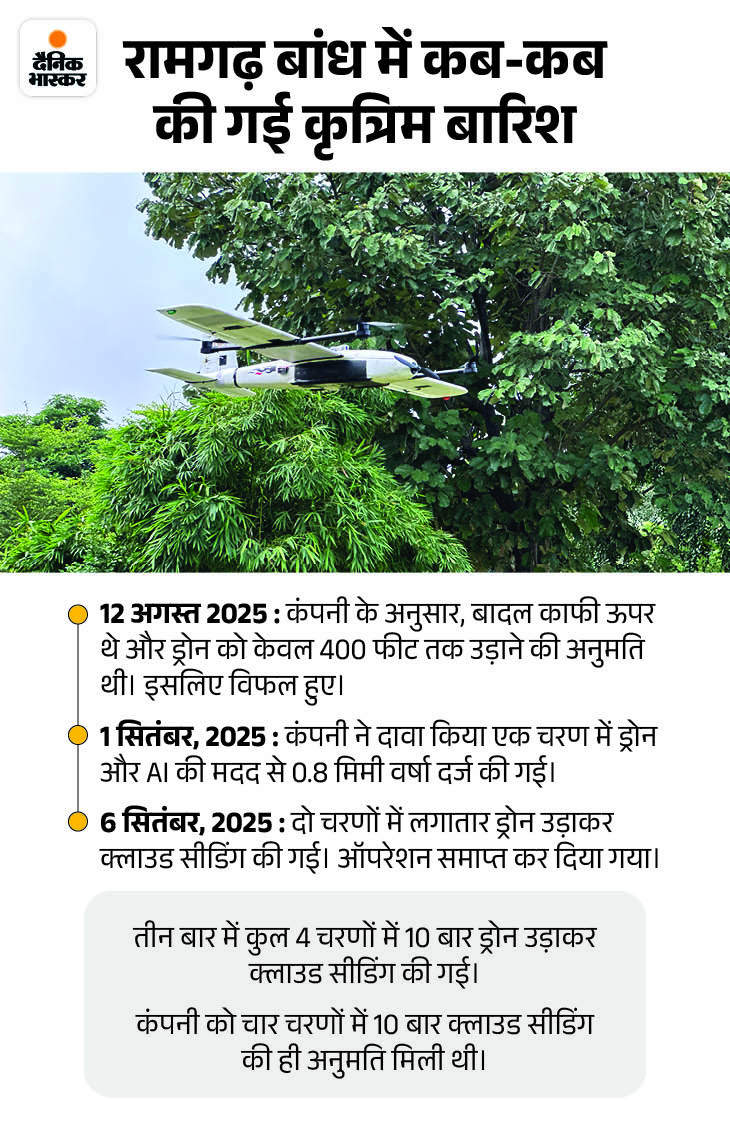
Questions and answers to Rakesh Aggarwal, representative of the company claiming artificial rain (Genxai)
Question: Artificial rains may be needed more in dry areas, so why are these experiments not doing in any such area? answer : Ramgarh was considered the lifeline of Jaipur. Governments made several efforts to bring water to Ramgarh many times. But success did not come. In such a situation, the Ramgarh dam area was selected in view of the intention of the government and the public. If the government gives a chance, then they will definitely try to make artificial rain in dry areas.
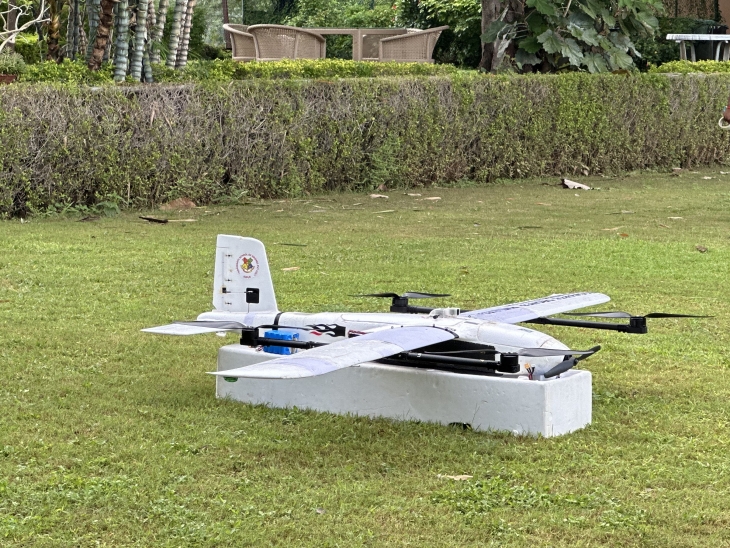
The company claims that it can use the US AI technology to make it rain through drones.
Question: Why did you choose this place, while Ramgarh region usually rains? answer : It rains in Ramgarh but does not fill water, our effort was to fill Ramgarh. Second, when we had told the government about our technology, the government suggested that this experiment should be done in Ramgarh dam.
Company bid- not permission on time Rakesh Aggarwal, the founder of the company of artificial rain, said- We wanted to do this experiment from May to July. However, due to late receiving permission from government departments, they had to use in the end of August. The company has done this experiment four times by blowing a drone at an altitude of 10 thousand feet. The company is describing it as successful on a scientific basis, while meteorologists are considering it a failure.
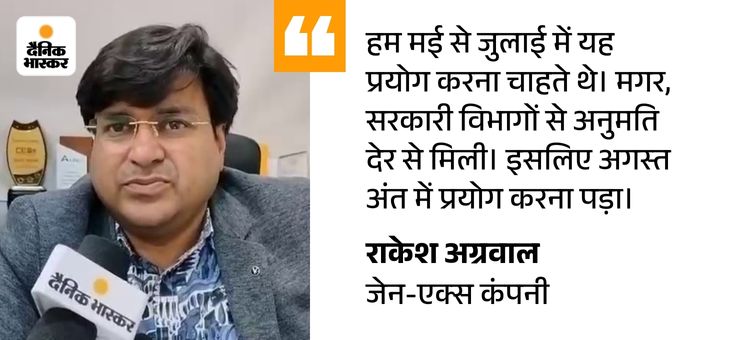
What are the rules globally Rathore said that the World Meteorological Organization (WMO) and the United Nations have made clear guidelines on weather modification experiments such as artificial rain.
Under the UN Convention in 1978, large -scale weather changes were banned. The reason is that other countries can be damaged by misusing such experiments during the war.
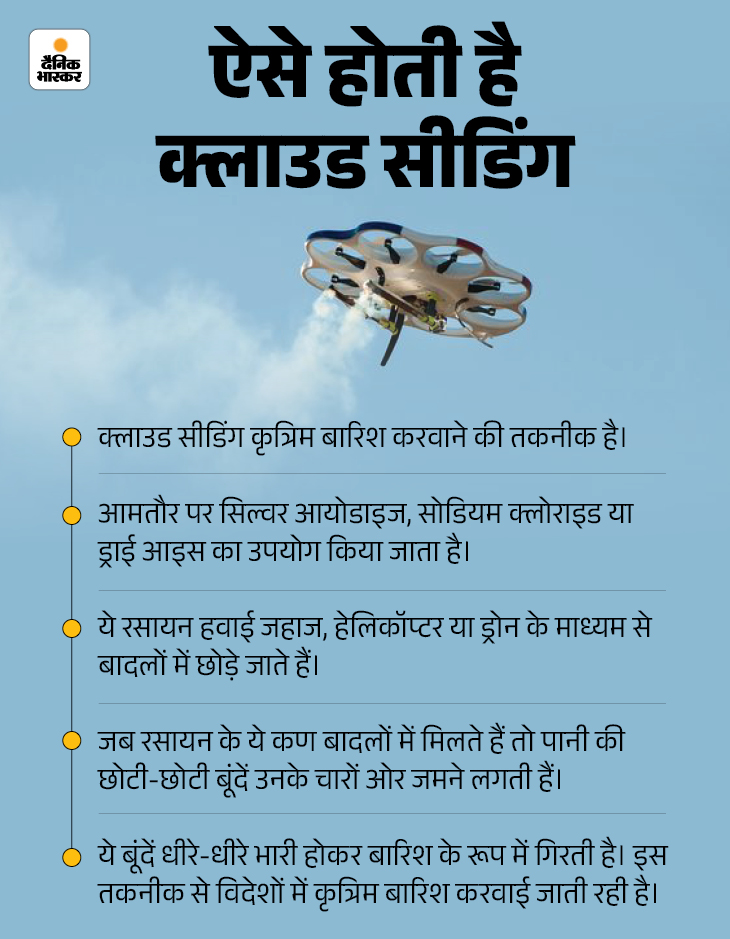
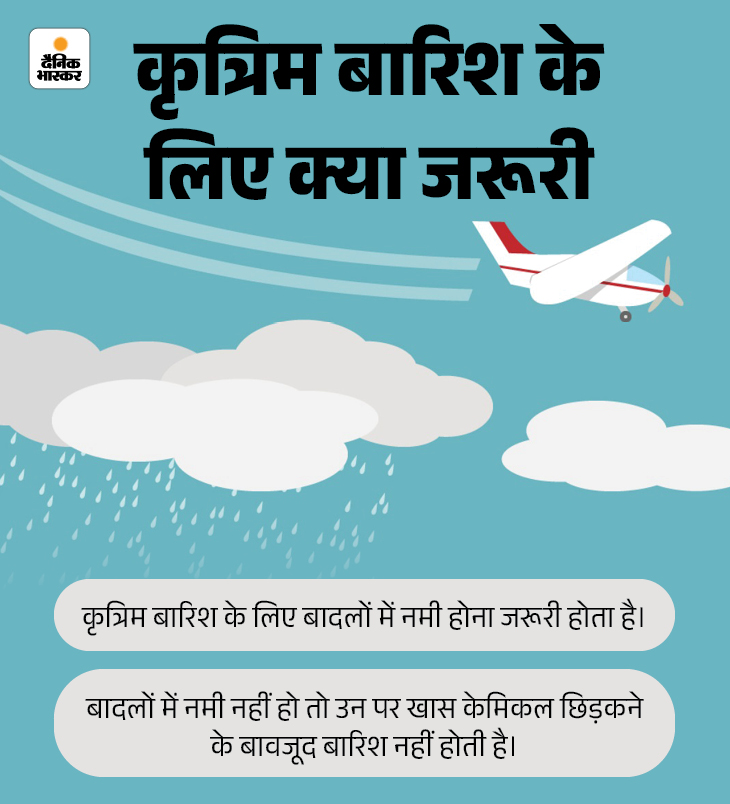
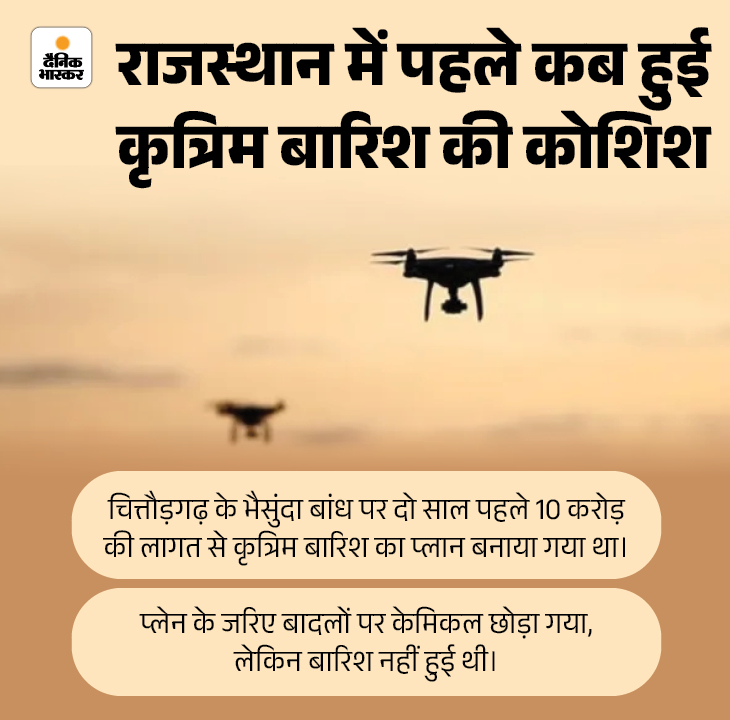
,
Also read this news of raining drones …
The first attempt for artificial rain failed in Jaipur: Company Boli- Badal was quite high, it is allowed to fly drones up to 400 feet height.
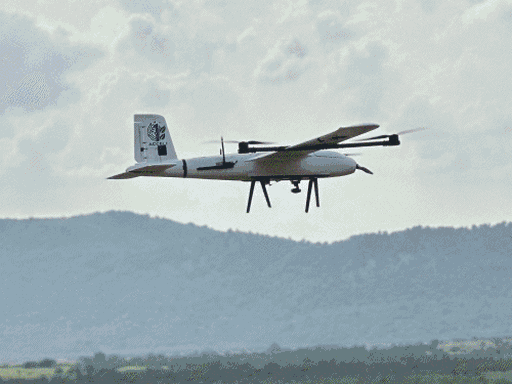
In the Ramgarh dam area of Jaipur, the first attempt to get artificial rain from drone failed on Tuesday. The clouds were quite high. So the cloud seeding did not happen. The drone was able to fly up to 400 feet. It was not allowed to fly above it. Read full news …
